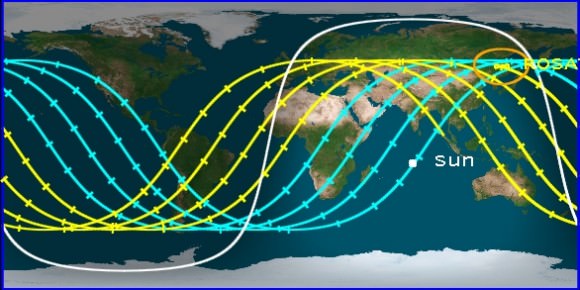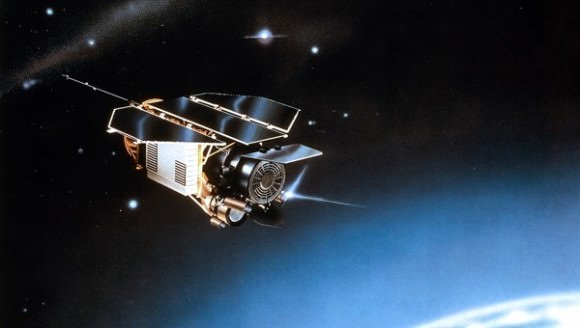
"S.I.A.S.E (Pronounced - Sigh-ass) This group was found by 5 different people with different opinions but having a common goal - " TO POPULARIZE ASTRONOMY". These 5 people are ordinary people who have come up with the idea of popularizing astronomy in their respective regions leading to a rise in the number of astronomers in the upcoming century. You can also Post all your Questions/Doubts on various topics of astronomy.
Saturday 29 October 2011
Tuesday 25 October 2011
The New Executives
On 24th of October 2011, the founders voted for the new executives of the organization.
This was followed by a formal badge-giving ceremony.
Now the current Staff-----
Founder(s)/Presidents(s)
- Abhishek Arora
- Darpan Bansal
- Nikhil Sharma
- Mihir Chawla
Founder/Creative Head
- Ishan Ambardar
Board of Directors
- Managing Director
- Ankur Dhama
- B.O.D
- Akshit Gupta
- Tapish Gupta
- Tejal Khullar
2 more people will be chosen for the board of Directors
Wednesday 19 October 2011
ROSAT – Fiery Debris To Rain From The Sky
ROSAT Credit: NASA
The recent
re-entry of the UARS satellite was not the end of falling satellite debris, as
the German ROSAT X-ray observatory satellite will soon crash back to Earth.
Last month NASA’s large UARS satellite re-entered the
atmosphere and burned up over the Pacific Ocean, with about 500 kg of debris
falling into the water. But the smaller Roentgen Satellite or ROSAT will have
approximately 30 pieces equaling 1.5 tons that will resist burn up and make it
to the surface.
The largest piece of the satellite expected to reach the
surface is the heat-resistant, 32 inch, 400 kg mirror.
Compared to UARS, there is an increased chance of someone
being hit by a piece of the falling debris. The odds have been estimated as a 1
in 2,000; UARS was 1 in 3,200.
As with UARS, it is unknown where ROSAT will burn up and
where its remaining parts will impact the surface, however the satellite is
expected to re-enter between the 21st and 24th of October. The Center for
Orbital and Re-Entry Debris studies predicts October 23, 2011 a 06:40 UTC ± 30
hours.
For up to date predictions check the
Centre for Orbital and Re-Entry Debris Studies.
Prediction Ground Track Credit: Center for Orbital and
Reentry Debris Studies
Until then, you can keep an eye out for the small satellite
as it is a naked eye object. It’s
nowhere near as bright as the ISS, but it is visible. Check Heavens Above or Spaceweather for predictions of when
it will pass over your location.
The 2.4 ton Roentgen Satellite (ROSAT) was launched by NASA
in 1990 as a joint venture between Germany, Britain and the USA.
The satellite was designed to catalogue X-ray sources in
deep space and mapped around 110,000 stars and supernovae. It also discovered
that some comets emit X-rays. It was permanently damaged in 1998, and its
mission was officially ended in February of 1999.
ROSAT will soon meet its fiery end; will you see it pass
over before then?
Keep an eye out for that falling mirror.
Credit:
NASA
Friday 14 October 2011
Space Fair - 13.10.2011
The fair organized at Ryan Vasant Kunj was a Great success. Photos will be uploaded soon at our PICASA album.
Debris of 'Doomsday' Comet Elenin to Pass by Earth Sunday
 |
|
Amateur astronomer Michael Mattiazzo of Castlemaine,
Australia caught these two images of comet Elenin on Aug. 19 (left) and
Sept. 6, 2011. The images show a rapid dimming in the comet, possibly
hinting at its disintegration. CREDIT: Michael Mattiazzo |
The moment long feared by conspiracy theorists is nearly upon us: The "doomsday comet" Elenin will make its closest approach to Earth Sunday (Oct. 16). Or what's left of it will, anyway.
Comet Elenin started breaking up in August after being blasted by a huge solar storm, and a close pass by the sun on Sept. 10 apparently finished it off, astronomers say. So what will cruise within 22 million miles (35.4 million kilometers) of our planet Sunday is likely to be a stream of debris rather than a completely intact comet.
And the leftovers of Elenin won't return for 12,000 years, astronomers say.
That means it probably won't present much of a skywatching show Sunday, scientists have said.
The doomsday comet
Elenin's apparent demise may come as a relief to some folks, since apocalyptic rumors circulating on the Internet portrayed the comet as a major threat to Earth.
One theory claimed Elenin would set off havoc on Earth after aligning with other heavenly bodies, spurring massive earthquakes and tsunamis. Another held that Elenin was not a comet at all, but in fact a rogue planet called Nibiru that would bring about the end times on Earth. After all, the comet's name could be taken as a spooky acronym: "Extinction-Level Event: Nibiru Is Nigh."
Those ideas were pure nonsense, Yeomans said.
"Elenin was a second-rate, wimpy little comet that never should have been noted for anything, really," he told SPACE.com. "It was not even a bright one."
Elenin's remains will not be the only objects about to make their closest pass of Earth. One day after the Elenin flyby, the small asteroid 2009 TM8 will zip close by. Like Elenin, it poses no risk of striking our home planet.
Asteroid 2009 TM8 is about 21 feet (6.4 meters) wide and the size of a schoolbus. It will come within 212,000 miles of Earth – just inside the orbit of the moon – when it zips by on Monday morning (Oct. 17).
Say goodbye to Elenin
Elenin was named after its discoverer, Russian amateur astronomer Leonid Elenin, who spotted it in December 2010. Before the icy wanderer broke up, its nucleus was likely 2 to 3 miles (3 to 5 km) in diameter, scientists say.
Elenin never posed any threat to life on Earth, Yeomans said. It was far too small to exert any appreciable influence on our planet unless it managed to hit us.
"Just driving to work every day in my subcompact car is going to have far more of a gravitational effect on Earth than this comet ever will," Yeomans said.
Elenin's supposed connection to earthquakes was just a correlation, and a weak one at that, he added. Relatively strong earthquakes occur every day somewhere on Earth, so it's easy — but not statistically valid — to blame some of them on the comet's changing position.
Yeomans views the frenzy over Elenin as a product of the Internet age, which allows loud and often uninformed voices to drown out the rather more prosaic results that scientists publish in peer-reviewed journals.
"It's a snowball effect on the Web," Yeomans said. "You get one or two folks who make an outrageous claim, and a bunch of others pile on. Some folks are actually making a living this way."
Elenin's crumbs will soon leave Earth in the rear-view mirror, speeding out on a long journey to the outer solar system. But Yeomans doesn't think the departure will keep the conspiracy theorists down for long.
"It's time to move on to the next armageddon," he said.
Tuesday 11 October 2011
Are Aliens Part of God's Plan, Too? Finding E.T. Could Change Religion Forever
Christians, in particular, might take the news hardest, because the Christian belief system does not easily allow for other intelligent beings in the universe, Christian thinkers said at the 100 Year Starship Symposium, a meeting sponsored by the Defense Advanced Research Projects Agency (DARPA) to discuss issues surrounding traveling to other stars.
In other words, "Did Jesus die for Klingons too?" as philosophy professor Christian Weidemannof Germany's Ruhr-University Bochum titled his talk at a panel on the philosophical and religious considerations of visiting other worlds.
Here's how the debate goes: If the whole of creation includes 125 billion galaxies with hundreds of billions of stars in each, as astronomers think, then what if some of these stars have planets with advanced civilizations, too? Why would Jesus Christ have come to Earth, of all the inhabited planets in the universe, to save Earthlings and abandon the rest of God's creatures?
Aliens and religion can still coexist
Weidemann, a self-described protestant Christian, suggested some possible solutions. Perhaps extraterrestrials aren't sinners, like humans, and therefore aren't in need of saving. However, the principle of mediocrity — the idea that your own example is most likely typical unless you have evidence to the contrary — casts doubt on this, he pointed out.
"If there are extraterrestrial intelligent beings at all, it is safe to assume that most of them are sinners too," Weidemann said. "If so, did Jesus save them too? My position is no. If so, our position among intelligent beings in the universe would be very exceptional."
Another possibility is that God incarnated multiple times, sending a version of himself down to save each inhabited planet separately.
However, based on the best guesses of how many civilizations we might expect to exist in the universe, and how long planets and civilizations are expected to survive, God's incarnations would have had to be in about 250 places simultaneously at any given time, assuming each incarnation took about 30 years, Weidemann calculated.
Religious food for thought
If God truly became corporeal and took human form when Jesus Christ was born, this wouldn't have been possible, Weidemann said.
Rev. Thomas Hoffmann, a protestant pastor in Tulsa, Okla., said that the issues Weidemann raised were "really on target."
"If life is discovered elsewhere, unfortunately we need to have more discussion about it," Hoffmann said. "I think this is a very robust conversation we need to have."
While the discovery of extraterrestrial intelligence would likely spur profound soul-searching for people of all faiths, many of the world's religions might have an easier time accommodating the knowledge than Christianity, said theologist Michael Waltemathe, also of the Ruhr-University Bochum.
"It seems to be only a problem of Christianity," Waltemathe said.
In Islam, for example, Muhammad was a prophet, or messenger of God, not God incarnate, so additional prophets could have simultaneously visited other planets to save extraterrestrial species, he said. And Hindus already believe in multiple deities, so accommodating more to guard over alien civilizations may not be difficult.
Ultimately, though, the discovery of intelligent aliens isn't likely to pose a serious crisis for Christianity, either, Hoffmann said. After all, the religion has survived challenging scientific revelations before.
"Religion is essentially conservative," Hoffmann told SIASE. "You can put almost anything in its face and it's going to shake out a little bit, and then it's going to drop right back down. We've seen this happen historically."
Subscribe to:
Posts (Atom)




